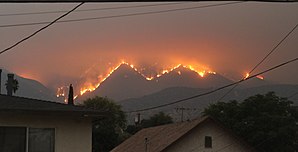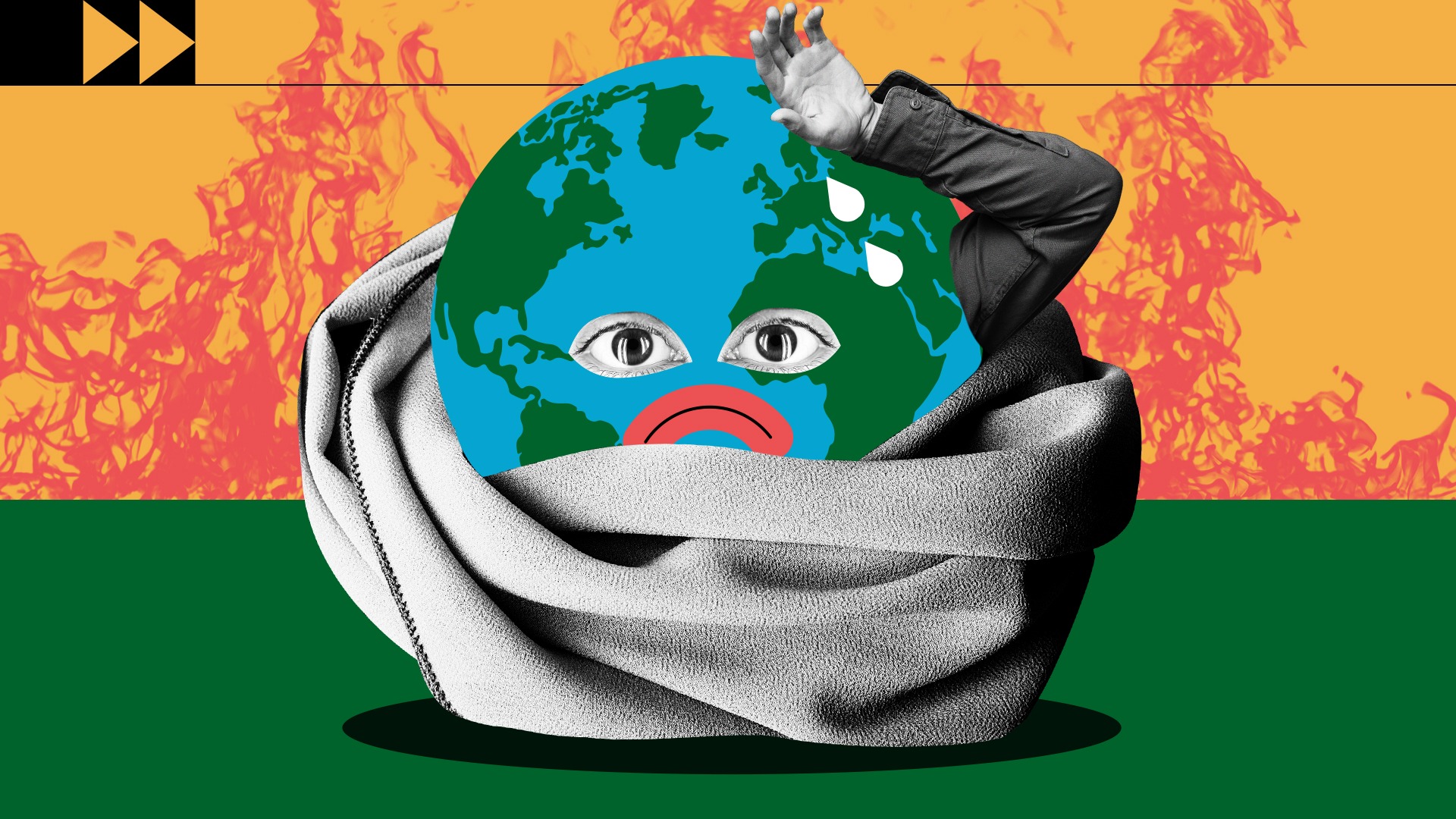Courtesy : en.wikipedia.org
Climate change
In common usage, climate change describes global warming—the ongoing increase in global average temperature—and its impacts on Earth’s climate system. Climate change in a broader sense also includes previous long-term changes to Earth’s climate. The current rise in global average temperature is more rapid than previous changes, and is primarily caused by humans burning fossil fuels.Fossil fuel use, deforestation, and some agricultural and industrial practices increase greenhouse gases like carbon dioxide and methane.Greenhouse gases absorb some of the heat that the Earth radiates after it warms from sunlight. Larger amounts of these gases trap more heat in Earth’s lower atmosphere, causing global warming.
Due to climate change, deserts are expanding, while heat waves and wildfires are becoming more common. Increased warming in te Arctic has contributed to melting permafrost, glacial retreat and sea ices loss.Higher temperatures are also causing more intense storms, droughts, and other weather extremes Rapid environmental change in mountains, coral reefs, and the Arctic is forcing many species to relocate or become extinct.Climate change threatens people with food and water scarcity, increased flooding, extreme heat, more disease, and economic loss. Human migration and conflict can also be a result. The World Health Organization (WHO) calls climate change the greatest threat to global health in the 21st century.Even if efforts to minimise future warming are successful, some effects will continue for centuries. These include sea level rise, and warmer, more acidic oceans.
Many of these impacts are already felt at the current 1.2 °C (2.2 °F) level of warming. Additional warming will increase these impacts and may trigger tipping points, such as the melting of the Greenland ice sheet.Under the 2015 Paris Agreement, nations collectively agreed to keep warming “well under 2 °C”. However, with pledges made under the Agreement, global warming would still reach about 2.7 °C (4.9 °F) by the end of the century.Limiting warming to 1.5 °C will require halving emissions by 2030 and achieving net-zero emissions by 2050.


![A dry lakebed in California, which is experiencing its worst megadrought in 1,200 years.[15]](https://upload.wikimedia.org/wikipedia/commons/thumb/d/d3/California_Drought_Dry_Lakebed_2009.jpg/129px-California_Drought_Dry_Lakebed_2009.jpg)
Some effects of climate change, clockwise from top left: Wildfire intensified by heat and drought, worsening droughts compromising water supplies, and bleaching of coral caused by ocean acidification and heating.
Making deep cuts in emissions will require switching away from burning fossil fuels and towards using electricity generated from low-carbon sources. This includes phasing out coal-fired power plants, vastly increasing use of wind, solar, and other types of renewable energy, and taking measures to reduce energy use. Electricity generated from non-carbon-emitting sources will need to replace fossil fuels for powering transportation, heating buildings, and operating industrial facilities. Carbon can also be removed from the atmosphere, for instance by increasing forest cover and by farming with methods that capture carbon in soil. While communities may adapt to climate change through efforts like better coastline protection, they cannot avert the risk of severe, widespread, and permanent impacts.
Terminology
Before the 1980s, when it was unclear whether the warming effect of increased greenhouse gases were stronger than the cooling effect of airborne particulates in air pollution, scientists used the term inadvertent climate modification to refer to human impacts on the climate.
In the 1980s, the terms global warming and climate change became more common. Though the two terms are sometimes used interchangeably, scientifically, global warming refers only to increased surface warming, and climate change describes the full effect of greenhouse gases on Earth’s climate system. Global warming—used as early as 1975—became the more popular term after NASA climate scientist James Hansen used it in his 1988 testimony in the U.S. Senate.Since the 2000s, climate change has increased in usage.Climate change can also refer more broadly to both human-caused changes or natural changes throughout Earth’s history.
Various scientists, politicians and media now use the terms climate crisis or climate emergency to talk about climate change, and global heating instead of global warming.
Observed temperature rise
Main articles: Temperature record of the last 2,000 years and Instrumental temperature record
Global surface temperature reconstruction over the last 2000 years using proxy data from tree rings, corals, and ice cores in blue.Directly observed data is in red.
Multiple independent instrumental datasets show that the climate system is warming.The 2011–2020 decade warmed to an average 1.09 °C [0.95–1.20 °C] compared to the pre-industrial baseline (1850–1900).Surface temperatures are rising by about 0.2 °C per decade, with 2020 reaching a temperature of 1.2 °C above the pre-industrial era. Since 1950, the number of cold days and nights has decreased, and the number of warm days and nights has increased.
There was little net warming between the 18th century and the mid-19th century. Climate information for that period comes from climate proxies, such as trees and ice cores. Thermometer records began to provide global coverage around 1850.Historical patterns of warming and cooling, like the Medieval Climate Anomaly and the Little Ice Age, did not occur at the same time across different regions. Temperatures may have reached as high as those of the late-20th century in a limited set of regions.There have been prehistorical episodes of global warming, such as the Paleocene–Eocene Thermal Maximum. However, the modern observed rise in temperature and CO2 concentrations has been so rapid that even abrupt geophysical events in Earth’s history do not approach current rates.
Evidence of warming from air temperature measurements are reinforced with a wide range of other observations. For example, changes to the natural water cycle have been predicted and observed, such as an increase in the frequency and intensity of heavy precipitation, melting of snow and land ice, and increased atmospheric humidity. Flora and fauna are also behaving in a manner consistent with warming; for instance, plants are flowering earlier in spring.Another key indicator is the cooling of the upper atmosphere, which demonstrates that greenhouse gases are trapping heat near the Earth’s surface and preventing it from radiating into space.




